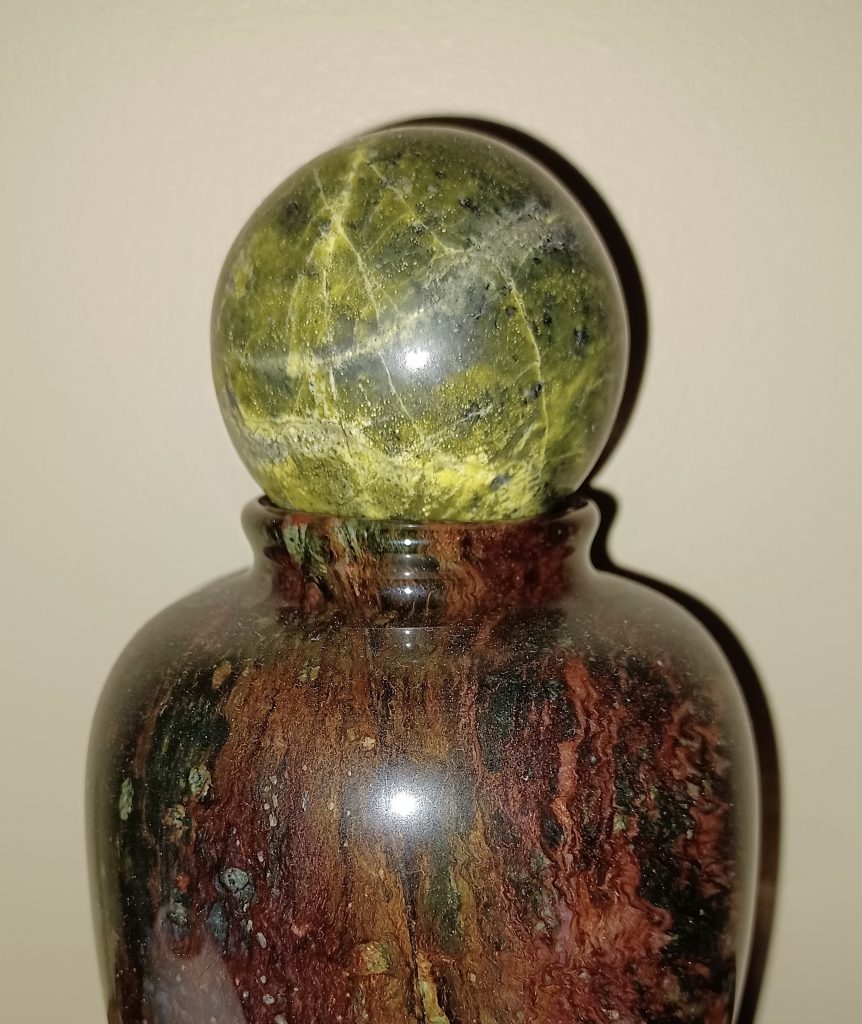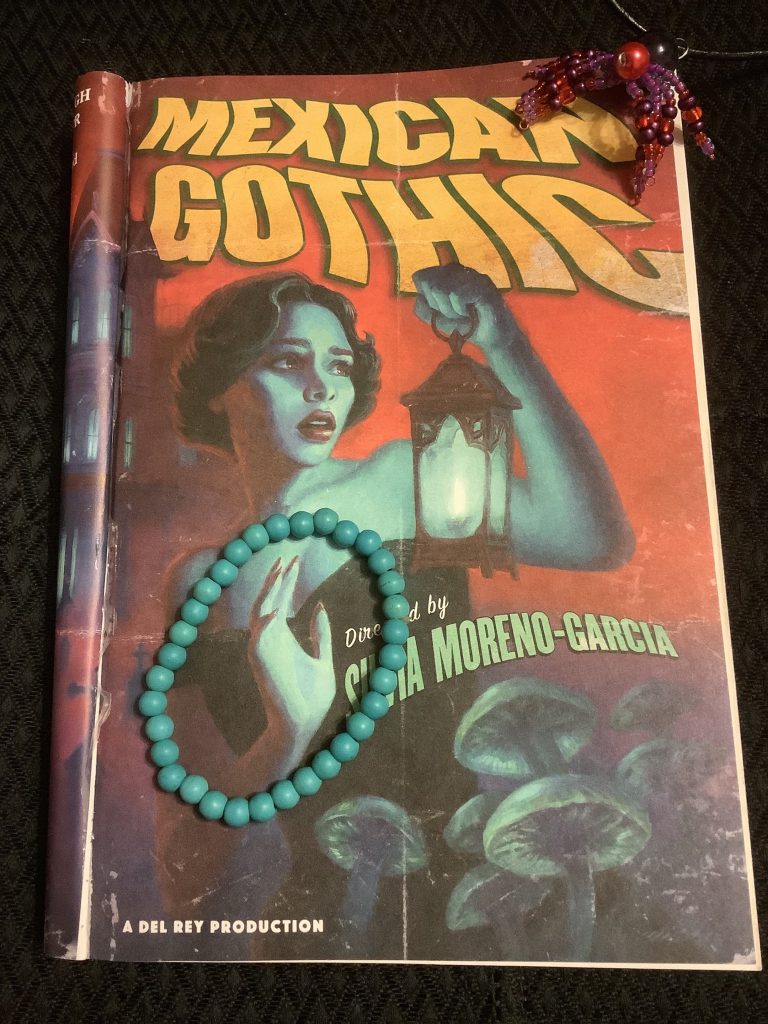Silvia Moreno-Garcia’s Mexican Gothic is a wild ride of a novel. I’m a big fan of the horror and Gothic genres, and I quickly found myself totally absorbed in this masterful story.
Set in the 1950s, the story follows the youngest daughter of the wealthy Taboada family. Noemí Taboada is a bubbly socialite from Mexico City who receives an urgent letter from her cousin Catalina. Her cousin is frantic, telling her of things living in the walls of the house, and filling the letter with strange sigils that don’t fit her usual shy but cheerful character. Fearing that the story might end up in the papers, Noemí goes to investigate High Place, the distant house where Catalina has moved to live with her new husband.
It turns out that High Place is a decaying English mansion, built by the once-rich Doyle family. Their silver mine has long since shut down, and Noemí suspects that Virgil, Catalina’s attractive husband, is planning to use the Taboada family coffers to replenish the Doyle stock. There is something immediately uncanny about the gloomy English mansion, high up on a deserted mountain road, emerging out of the Mexican countryside. The descriptions of mold and mildew in the house were fantastic, and really added to the atmosphere of a corrupt family line that is rotting from the inside out. With only four family members and three servants left, the Doyle clan appears to be on its last legs, but they form a tight-knit circle from which Noemí is excluded.
The entire story is told from Noemí’s perspective, which adds drama to each twist that is revealed. As Noemí searches for answers, the history of the Doyles only seems to get darker, and Catalina’s condition worsens. Unfortunately, Virgil refuses to move Catalina to another city to take care of her health, and the small village closest to High Place is only accessible by car, so Noemí is stuck in the decaying house.

All of the characters in the story are well constructed, but Noemí is definitely my favourite. I love the fact that she is a socialite, but she is by no means superficial. She may smoke and wear daring outfits, but she is also a passionate piano player, and studies anthropology. Noemí’s interest in anthropology helped her stand up to Howard, the family’s elderly patriarch, when he tried to bring up some studies about race mixing. Without her interest in academics, she likely wouldn’t have been able to fend him off.
Noemí longs to pursue her education, and not simply settle down and become a wife as her father expects. Of course she doesn’t need any man to accompany her to High Place; she is perfectly capable of doing the job herself.
It is interesting how Moreno-Garcia managed to create a character that is both independent and desperate for social contact. Noemí may not need the attention, but it is clear that she longs for some kind of companionship. Unfortunately, the Doyle household is so silent, and since Catalina is ill, they are reluctant to let Noemí visit her. I also really enjoyed the detail that Moreno-Garcia puts into each of Noemí’s outfits. The focus on the purple taffeta dress or red bolero that Noemí likes to wear brings back a flare of her personality, even when High Place begins to wear her down.
The bond between Noemí and Catalina adds a beautiful emotional layer to the story, and I really admire her fierce loyalty to Catalina. Moreno-Garcia truly captured the feeling that these two young women were raised closely together. It’s also clear that caring for Catalina is more than some family obligation for Noemí, who is genuinely determined to help her cousin heal. The profound feeling of sisterhood makes it even worse when Catalina goes into a catatonic, trance-like state, leaving Noemí alone in the creepy house with no true allies.

While Mexican Gothic has some interesting thriller elements as Noemí investigates the old house and the family living in it, the story sits firmly in the realm of horror. Moreno-Garcia manages to capture elements of classic Gothic stories like Poe’s The Fall of the House of Usher, and 20th-Century Gothic films, like Hitchcock’s Rebecca. There are even some aspects of a Lovecraftian mythos, with intense nightmares and horrors beyond Noemí’s comprehension, with a healthy dose of body horror and illness in the style of The Yellow Wallpaper.
Another interesting aspect is how old horrors come back to haunt the present. Many of the characters’ problems in Mexican Gothic come down to sexism and racism. The Doyles’ servants all came from England to help their masters, leaving Noemí and Catalina to be the only women of colour in the house. Catalina has “mixed” roots, while Noemí is explicitly described as darker-skinned, which makes her stand out from the rest of the family.
While Howard seems to take a perverted interest in Noemí, Florence—the matronly aunt who runs the household—is disgusted by her. This likely feeds into the family’s sexist views, which also led to ignoring Catalina’s signs of growing mental illness. Both Noemí and Catalina are described as “hysterical,” and are told that Catalina simply has tuberculosis and needs to rest. When Noemí protests, she is told by Virgil that he is aware of her mental deterioration, but does not believe that Mexican psychologists are qualified to help his wife.

High Place’s cemetery only furthers the legacy of colonial racism present in the house. While there is a Doyle family mausoleum, statues, and gravestones for the English mine workers, there are also an untold number of Mexican workers buried there. Multiple epidemics ravaged the mine over the years, but many of the workers did not have family close by, and were simply buried without any rite or ceremony. Yet Francis, Virgil’s cousin, regularly goes there to pick the mushrooms, and does not seem concerned about what may be feeding their growth.
The persistent dehumanization and the view of people as simply bodies—to work in the mine, to produce heirs for the family—is one of the greatest horrors in the book. It is a terror deeper than any supernatural entity because it continues to impact so many even today. The legacy of colonialism in North America has left the land haunted, with the exploitation of Indigenous people lingering in mind no matter how much one tries to build on top of it. This kind of horror hits harder for me because of its basis in reality. Moreno-Garcia manages to tap into both a profound sense of compassion and loathing of the wrongs that have been done.
This book has to be one of my favourite reads of this year, right up with Iron Widow. Moreno-Garcia has written a fantastic story that is easy to binge on a dark night. I love when modern authors revisit older genres, and Moreno-Garcia’s work breathes life back into the 1950s Gothic style. While Mexican Gothic is a great read to get into the spirit of Halloween, it can truly be enjoyed all year long.

1 Comment